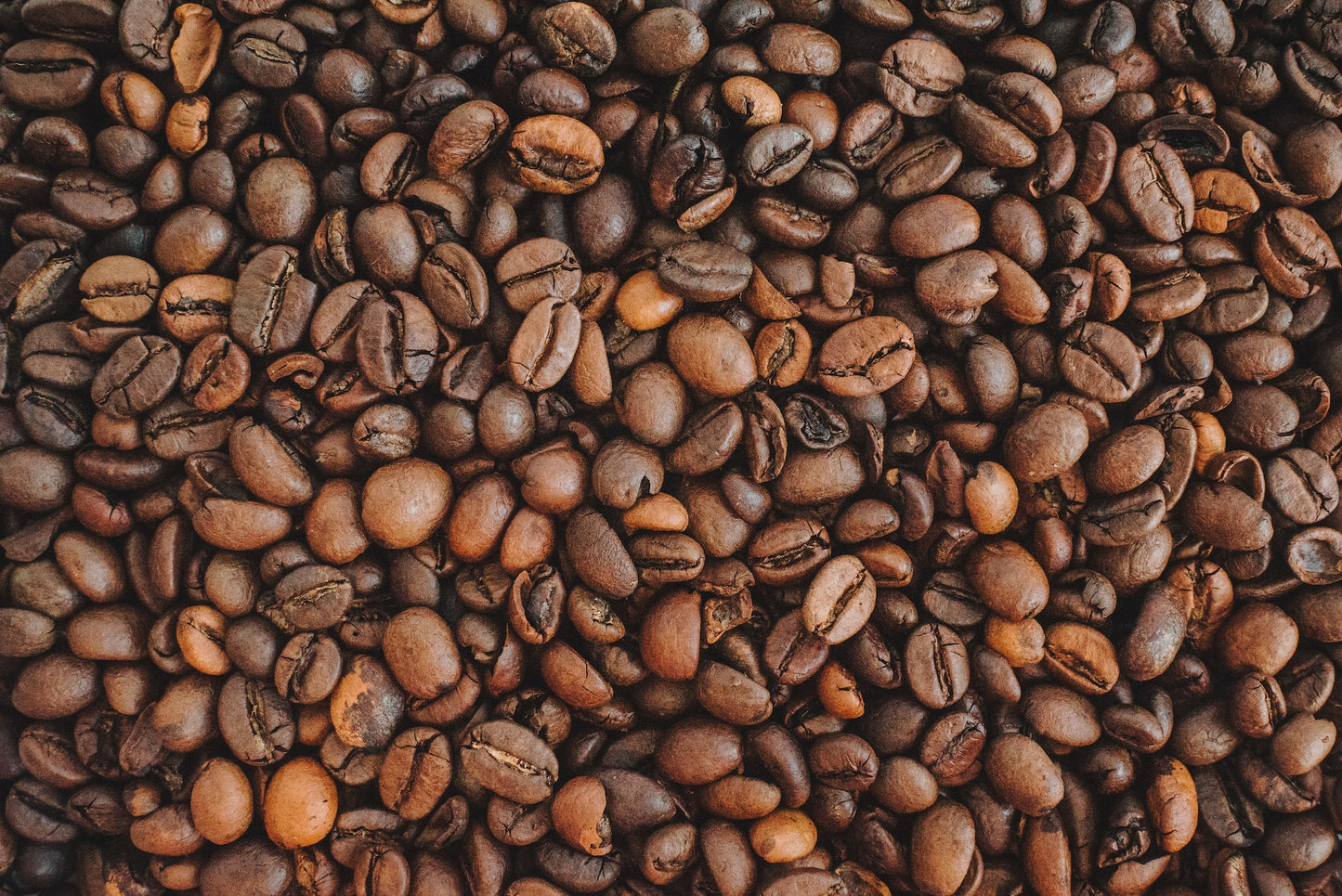
Dry vs Oily Coffee Beans
Dry coffee beans are beans that have not been roasted for a long period. They typically have a lighter color and a rougher texture compared to oily coffee beans. There are a few reasons why our goal is to not have oily beans.
One of the benefits of dry coffee beans is they tend to retain their flavors better than oily coffee beans. This is because most of the flavor in a coffee bean is in those oils. The longer we roast them, the more we draw out the moisture and the oils that are in the bean. As a result, the flavors of dry coffee beans are more distinct and can be better appreciated in the final cup of coffee.
Dry coffee beans are also easier to grind. Since they are less oily, they don't stick to the grinder blades/burrs as easily, which decreases the chances of your grinder getting clogged.
Oily coffee beans, on the other hand, are beans that have been roasted for a longer period. They typically have a darker color and a shinier surface compared to lighter, dry, coffee beans. The oil on the surface of the beans comes from the coffee's natural oils being brought to the surface during the roasting process. The result of a darker roasted bean then depends on the roaster. As a result, darker beans have a roasted or smoky flavor.

However, one potential drawback of oily coffee beans is they can be more susceptible to moisture and air exposure. Because the oils are exposed to air quicker, the likelihood of the oils to go rancid quickly increases.
But what about espresso? Isn’t that supposed to be oily? While we’ve heard this a few times, “espresso” refers to a type of grind more than a type of coffee. In fact, any coffee that makes a good breakfast blend should make a good espresso. It has been a trend at different times to over-roast espresso, to have a smoky flavor that draws through milk and syrup. But because those oils are exposed to air and get oxidized, we want those oils to stay within the bean and be exposed only when brewed for an always fresh, wonderful flavor.
The process of decaffeination also brings oils outside of the bean, because it destroys the integrity of the bean itself. Some processes improve this trait, but even lightly roasted decaf coffees present with oils shortly after roast.
You might notice that your once dry, fresh beans do get oily. As the beans sit over time, the oils continue to draw out of the bean naturally and eventually reach the surface. For some, this is a good indicator of older beans.

At Mighty Missouri, we roast in a way to bring out the natural flavors of the beans. That starts with great sourcing: how it’s grown (altitude, varietals, temperature etc.), to how it’s produced (how the seed of the cherry is removed from the pulp). We then roast the coffee beans to draw out that flavor in the way we think best exemplifies the spirit of the heart of the Northern Plains.
When you open a bag of coffee and see oil, you can remember what it’s caused by: over roasted beans, old beans, or decaffeinated beans.
